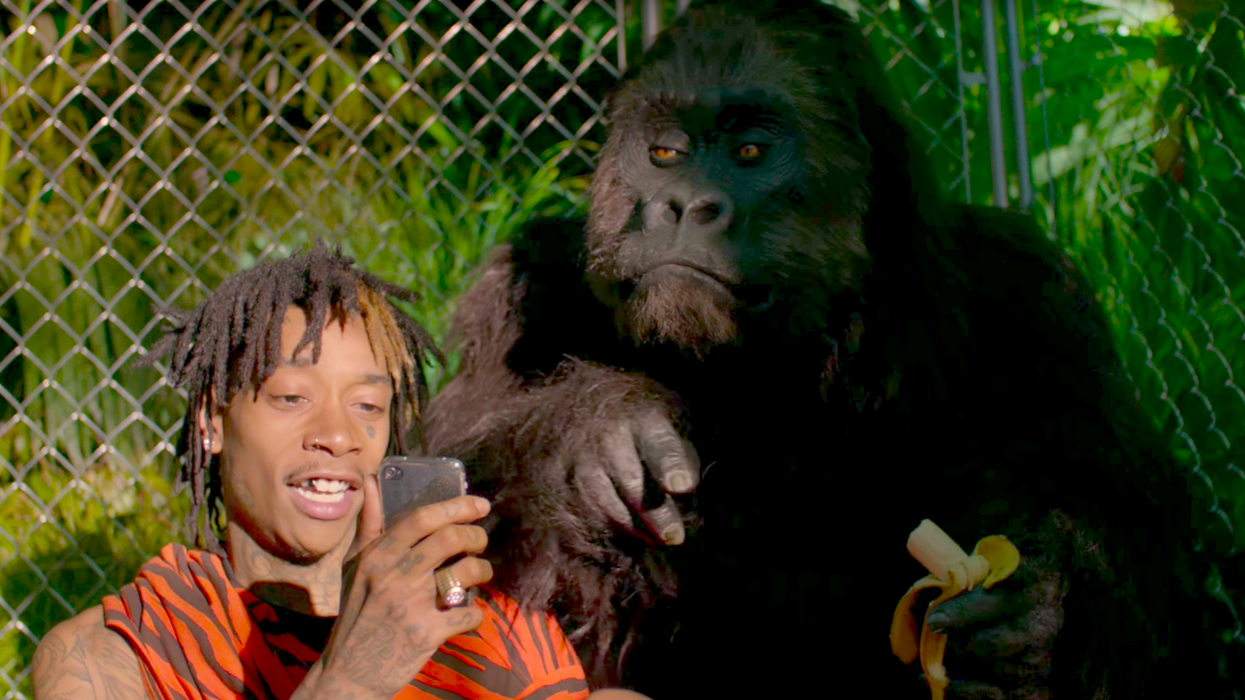How Do You Boost Your Audience Engagement? It's All in the Touch
Three storytelling innovators discuss the best ways to apply interactivity to filmmaking and outreach.

We’re all familiar with interactivity—most of us use touch-screens every day. It’s on our phones and tablets. It’s in our video games. It’s how our children are learning (and playing Candy Crush). Interactive technology is proven to increase engagement and cognition, as evidenced by the immense success of Apple products. But the realm of film and video hasn’t quite caught on to this. At IFP Film Week, there were a select few working to bring the industry up to speed.
The event's New Forms of Storytelling: Interactive panel included Samia Khan (Director of Partnerships, Mediastorm), Alex Vlack (VP, Creative, Eko), and Jeremy Chilnick (COO, Warrior Poets). Below are the some of the ways interactivity can serve you in your filmmaking.
Convey information comprehensively
Interactive media tools can be used to break down and organize massive amounts of information. This can be especially useful for documentary filmmaking, when you want to present a larger context without convoluting your story. Mediastorm partners with social justice organizations to do just that. Samia Khan showed several projects, including their Emmy-winning multimedia collaboration with CFR, covering the Crises in Iran.
“It’s about taking really hot button conflict issues and thinking about how to explain those, as complex as they are, in very simple ways,” Khan shared.
She demonstrated how a user might go through the media package. “We start with video, and it’s using a lot of expert interviews or news footage about what’s happened so that you’re grounded in the experience. But then you want to be able to use different tools along the way that help you get into the nitty gritty of what’s happening there. So this is about using video to lead, and then having interactive timelines, maps, and graphics.” For their use, “this is about really complementing video with different tools.”
What's the benefit? According to Khan, “This basically replaces a 2,000-page document that would take 10 economists to help explain.”
Bring your audience into the conversation
Removing the passivity from entertainment is a major goal of interactive technology. In this modern age of increasingly shorter attention spans, letting the user sit unengaged is dangerous. But it’s not exclusively filmmaker-serving; tests have shown that audiences want to be involved. In fact, Alex Vlack said, the engagement rates are markedly higher. “Most music videos have something like a 50-60% completion rate, but EKO’s [interactive] music videos have about 180% because people keep watching them over, and over, and over to all the different ways they play out.
With that in mind, EKO and Warrior Poets teamed up to create Call BullSh*t, an interactive way to fact check the election primaries.
“The exciting thing for us was that you could give agency to an audience to actually learn something,” said Chilnick. “And also be empowered to say what we’re all thinking when we’re yelling at the television saying: ‘I can’t believe they just said that, this is total bullshit.’”
Along with the app, they were able to bring in several social media components. In this way, the engagement became exponential. Chilnick explained, “you could share your bullshit score with all your friends on Facebook. You could see how many people across the entire audience called bullshit about that statement. And that was really exciting or us.”
Use the inherent interactivity of your stories
Don’t use interactivity just because the technology exists, the panelists urged. Use it because your story demands to be told that way.
“Every story demands the way that it is told,” said Vlack. “There are some stories that actually demand to be interactive, it’s not just interactive because we have the technology to do it. it’s because the structure of the story demands agency.”
Next time you’re creating a video, be it feature, short, or commercial, really think about the best audience experience. How many times have you shouted at the screen for a character not to go in that room? Now imagine if you could actually tell them not to.
Update your storytelling to meet the audience where they are
Though it seems like the tools for filmmaking are constantly evolving, Vlack points out that the way we view video is actually behind the times.
“There’s this really extraordinary thing where, if you think about it, essentially every single human being in this country has a laptop or smartphone. We’ve had streaming video and internet now for some time. We have these really powerful devices, and literally everything else that you do involves engaging with them. Even just to turn them on, or to swipe, or text, or play with any apps. We’re all very used to it being so powerful. But video hasn’t evolved—the only way that video itself has evolved on these devices, is that it has generally gotten shorter. But the actual medium itself hasn't changed.”
“People expect to engage,” he added.
Take advantage of the huge potential payout
For an independent filmmaker, new technology can be financially intimidating. But these kinds of tools are actually more accessible than you’d think. And if you play it right, they can really pay off. How? Brand buy-ins.
EKO’s tool is free, Vlack added, “it’s very powerful and you can use it yourself.”
“What’s really cool is brands are actually paying attention to the fact that people are engaging with this. Brands have started to pay for engagement. You can be in charge of building your own audience, and line up a brand sponsor the way you do with YouTube.”
If you're interested in trying out interactive technology in your next project, IFP & EKO have teamed up to offer a $10,000 production grant. Learn more about it here.











